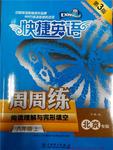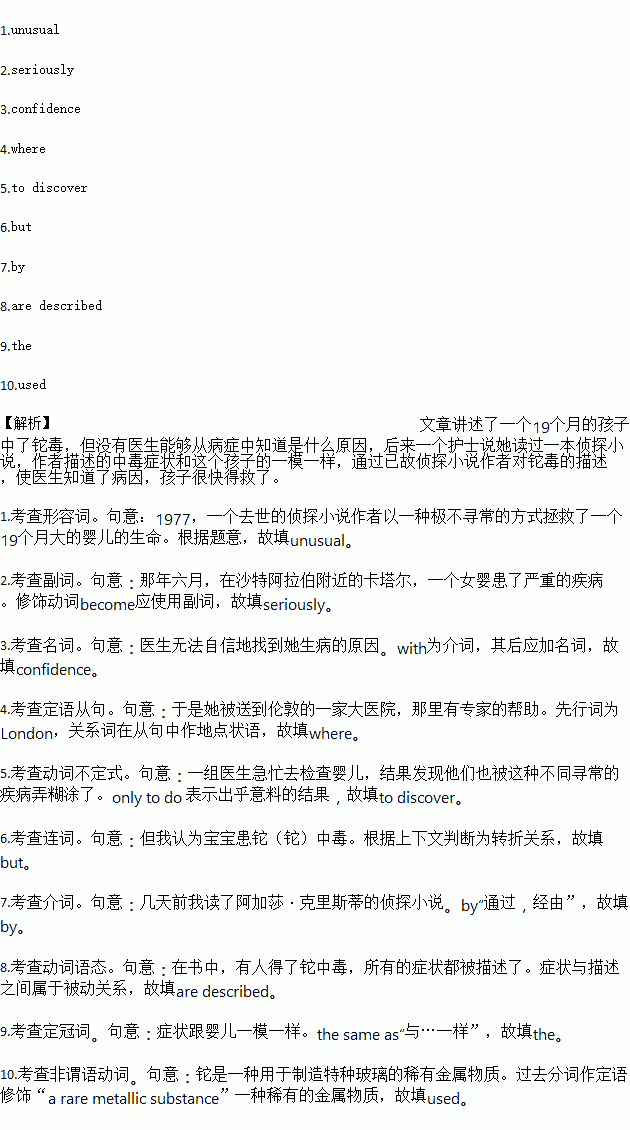题目内容
In 1977, a dead author of detective stories saved the life of a 19-month-old baby in a most 1.(usual) way. The author was Agatha Christie, one of the most successful writers of detective stories in the world.
In June that year, a baby girl became 2.(serious) ill in Qatar, near Saudi Arabia. Doctors were unable to find out the cause of her illness with 3.(confident), so she was sent to big hospital in London 4.specialist help was available. A team of doctors hurried to examine the baby only 5.(discover) that they, too, were confused by the very unusual disease. Just then, a nurse asked to speak to them.
"Excuse me," said the nurse, "6. I think the baby is suffering from thallium(铊) poisoning. "
"What makes you think that?" Dr. Brown asked. "Thallium poisoning is extremely rare."
"I read a detective novel 7. Agatha Christie a few days ago,” the nurse explained, "and in the book, somebody suffers from thallium poisoning, and all the symptoms 8.(describe). They’re exactly 9. same as the baby's."
The tests showed that the baby had indeed been poisoned by thallium, a rare metallic substance10. (use) in making special glass. Once they knew the cause of the illness, the doctors were able to give the baby the correct treatment. She soon recovered and was sent back home.
 快捷英语周周练系列答案
快捷英语周周练系列答案

 ources. A high fee would filter out most of the visitors who have no desire 7.(use) the sports field for its intended purpose. Besides, universities and their assets are expensive investments, 8. (fund) by the government and the public, for the education of students and 9. (science) research. If members of the public 10.(want) to use these facilities, which might cause stress on the university’s resources, it will make sense that they should pay a price. They also think neighboring residents have other options for recreation, such as public parks, if they do not want to pay money to use the sports field.
ources. A high fee would filter out most of the visitors who have no desire 7.(use) the sports field for its intended purpose. Besides, universities and their assets are expensive investments, 8. (fund) by the government and the public, for the education of students and 9. (science) research. If members of the public 10.(want) to use these facilities, which might cause stress on the university’s resources, it will make sense that they should pay a price. They also think neighboring residents have other options for recreation, such as public parks, if they do not want to pay money to use the sports field.